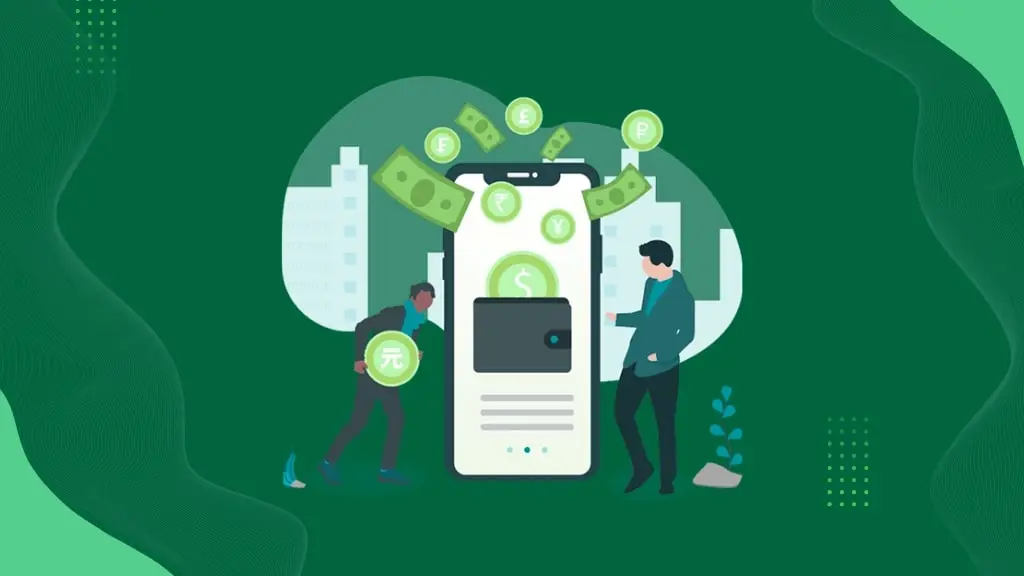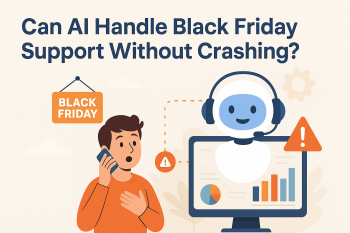Reports suggest the Fintech Market size is estimated at USD 312.92 billion in 2024 and is expected to reach USD 608.35 billion by 2029, with the assistance of the growing need for online financial services and technology enhancement of mobile applications. Such accelerated growth is the result of the increasing popularity of FinTech solutions, including the use of applications in the financial, banking, insurance, and investment industries.
Being identified and adopted by consumers and businesses, FinTech applications have become popular with innovations and needs. If you have a financial app idea and want to know how it can be built, here is the guide that will guide you through the developmental process.
Understanding the FinTech Landscape
To proceed with the app development, one should familiarize oneself with the FinTech environment. It covers all the sectors and sub-sectors of the financial industry with products such as mobile money, payment solutions, Digital wallets, Financial apps, Investment management and trading, cryptocurrency trading, etc.
To build a FinTech app, it is necessary to set up the audience of a future application and the purpose it will serve. Some actual practical recommendations within the process include the following: The FinTech environment is highly regulated, so being aware of the cognate laws and regulations is also compulsory.
Related Blog: The Step-by-Step Guide to E-Learning Software Development
STEP 1: What Is Your App Idea?
The first step towards developing your FinTech App is determining what app you want to create. To build a FinTech app, the first thing that needs to be done is to identify your concept. Ask yourself the following questions:
- What issue is your app solving?
- Who are the audiences that you are targeting?
- Which attributes will your application have?
- What areas will make your app unique from other existing FinTech app builder solutions in the market?
For instance, suppose you are developing a mobile payment solution, and its distinct selling point could be easy to use with minimal transaction cost and safety. If you are designing a financial application like a personal finance app, then you could base your value proposition around simplified budgeting methods and customer-centric financial analytics.
Constructing a comprehensive app idea will help to set a framework for all the work and follow the specifications of the needs of users and market requirements.
Step 2: Select Appropriate Technologies
Choosing the proper technology suite is one of the critical determinants of the success of your FinTech app development company. The technology stack is defined as the software tools, frameworks, languages, platforms, and other components that would be used in the development of your app. Key considerations include:
- Front-End Development: The front end is the outermost layer of the application and contains the actual user interfaces. HTML, CSS, and JS are the platforms in which you can design an interactive UI, or we can use frameworks like react native or Flutter.
- Back-End Development: The back-end is the part of the app running on the server that is responsible for data processing, storage, and protection. One of the widely used back-end technologies is Node. javascript, J2EE, js, Ruby on Rails and Django. You will also have to decide on the use of databases such as MySQL, PostgreSQL, MongoDB, etc.
- APIs: Many FinTech apps are built on top of third-party APIs, among which are payment processing API, identity verification API, and data aggregation API. Find and incorporate good and relevant APIs that correspond to the capability of your app.
- Security Technologies: Security is of topmost importance when it comes to the FinTech app development company. Encrypt data transfer (SSL/TLS) or use other protocols, perform multiple-factor authentication for users, and secure data with coding techniques.
The technology stack selection helps build an app that can be easily scaled up, will not have security issues, and can offer a perfect user experience.
Don’t Miss: Custom Education App Development: Cost & Features
Step 3: Creating The Layout Of The App
The UI or appearance of the FinTech app has to be given much importance when it comes to acquiring and user engagement. This is the magic of UI/UX; it is possible to bring ease to a complex financial situation simply because the interface is well-designed. Critical considerations for designing your app include:
- User-Centric Design: You are interested in intriguing a flawless user interface as a primary objective. Engage in the user study to gain insight into how the various clients use the financial applications and adopt the insight in the design.
- Consistency: Make sure your app’s layout is coherent across all the fences and screens of the application. Using the same color scheme, typescripts, and formatting establishes a neat business-like look.
- Accessibility: Ensure that your application is fully customizable to include disabled persons. Some examples of such features include compatibility with a screen reader, the high-contrast mode, as well as clear and legible fonts.
- Navigation: Make it easier for users to get around, hence improving the chances that they will discover content relevant to their needs. Provide easily understandable menus and labels and associate the flow of an application with the user’s thinking process.
- Branding: Make sure brand identity is incorporated into the appearance of the application. Ensure the use of colors, logos, and other features that are closely related to your brand to give the cover a familiar and reliable look.
One suggestion for building a Fintech app user interface would be to use wireframing and mocking tools like Figma, Sketch, and Adobe XD. These prototypes can be tested with real users, and this will give feedback that will improve the design before going to the development phase.
Step 4: Security And Compliance
Security and compliance should not be an issue of discussion when it comes to the development and to build a FinTech app. Financial apps process plenty of sensitive data and customer transactions — making them an excellent starting point for hackers.
Furthermore, FinTech is also a legal industry, which means that noncompliance with the laws might result in severe consequences.
Some critical security measures and compliance requirements to consider:
- Data Encryption: Use of strong encryption on the traffic that passes through the system and on the data that is stored in the system. The choice of encryption algorithms: encryption algorithms that are used in the industry, such as AES-256.
- Authentication: Implement the use of the Multi-Factor Authentication (MFA) to ensure there is added security to people’s accounts. This could be people inputting one or two passwords, fingerprints, facial identities, or one-time code numbers.
- Data Privacy: Be sure that your app is GDPR compliant if you are targeting EU countries or CCPA if you are targeting the US market. Privacy policies must be clearly stated, and user consent must be obtained before personal information can be collected.
- Compliance with Financial Regulations: Based on what your app is going to include, you may require compliance with financial rules such as PCI DSS for a payment app or AML for combating money laundering.
- Regular Security Audits: For the security audit and vulnerability assessment, the following measures should be recommended. Find the best methods, applications, reports, and advisories in the field of security to protect your Fintech app builder.
Step 5: FinTech App Idea Development and Testing
When the concept of the app has been brought down to its details and the technology to be used has been determined, then the natural process of developing the app begins. In this phase, the front end and back end of the app are coded, APIs are incorporated, and security is established. The development can be divided into the following steps:
- Front-End Development: Translate your designs into various prototypes that will be used to make the user interface. Make sure that the app works properly on all devices, including different resolutions.
- Back-End Development: Find information resources, such as databases, web server-side coding, and APIs, that form the base of your application. Concentrate on the formation of stable work to store and process users’ data and their transactions securely.
- Integration: Include external APIs and services that are crucial for product performance and that your application would benefit from, like payment processing, user verification, and account management.
- Security Implementation: Ensure the adoption of all forms of security, such as encryption, authentication, and meeting of the set regulations.
It is expedient to test the product in some instances in the development cycle. Carry out testing to be sure that your Fintech app is bug-free and secure and provides users with a pleasant experience. Consider the following types of testing:
- Unit Testing: Debug individual elements of your app to check that they will perform optimally.
- Integration Testing: Do a trial run and test the interface of one or many components or APIs to see how well they are compatible.
- Security Testing: Cast the network penetration testing and vulnerability assessment to determine security vulnerabilities.
- User Acceptance Testing (UAT): Engage real users to test the app to air out their views and concerns about the app.
Must Know – Cloud-Based Application Development: A Step-by-Step Guide
Step 6: Planning and Marketing of FinTech App
That is when your app has serving conditions after the pre-testing, post-testing, integration testing, and performance testing. Nevertheless, they always entail thematic and aggressive preparation and introduction. Consider the following steps:
- App Store Submission: App distribution of the app, i.e., posting your app on app stores like the Apple App Store and Google Play Store. Make sure that you build a Fintech app that corresponds to all guidelines and requirements of these platforms.
- Marketing Strategy: Come up with a marketing campaign for your application to make it known to people so they can download it. These may be Social media marketing and advertising, content marketing, influencer marketing and advertising, and others.
- User Onboarding: Make an easy and straightforward navigation for new users to explain to them what the application has to offer and how they could benefit from it. By fostering a proper onboarding process, one can gain considerably increased user engagement and, therefore, increased persistence.
- Gather Feedback: After the launch, one should get as much feedback as possible to know the negative aspects that the users perceive about the product developed. It is beneficial to use this feedback to make some modifications and improve the app progressively.
Step 7: Support and Growth of FinTech App
The advent of your first FinTech app development company is just the first step. To be more competitive, you must continue maintaining the app and expand it depending on the number of users you have in your application. Here are some critical post-launch activities:
- Regular Updates: Always release periodic updates to address known issues, enhance the experience, or expand on aspects of the resource. It is advisable to monitor the activity of users and new trends if you want to launch updates.
- Customer Support: Ensure adequate consumer support to deal with their concerns and questions. The support can be offered through email, chat, or social networks.
- Scalability: However, as app size increases and your application becomes more popular and constantly used in a large number of transactions, additional capacities may need to be created. Choose a cloud service and use a flexible architecture to guarantee the availability of extra capabilities.
- Compliance Monitoring: Compliance – always be informed when there are changes in regulations that may affect your application. Ensure to always go over your app’s security and privacy mechanisms to accommodate the users and protect their information.
Also Read: How to Create an App Using AI/ML for Your Business
Conclusion
Fintech applications thus are in high demand. Not even the world’s leading conventional banks have failed to introduce their own tailor-made and connected mobile applications for internal business and better and closer access to the target customers. This is the right time for businesses, no matter their size, to do something and inscribe their names in the fintech market with quality products.
The production of a fintech app is a challenging task, and it is pertinent for the app developers to have a good understanding of how the industry operates. Follow the instructions mentioned above and implement the tips above along with cooperation with a dependable outsourcing acquaintance such as Provis Technologies. Your fintech ideas will not be a dream for long.
Written By
Author's Picks
- A Complete Checklist to Build a Secure Mobile App
- 20/08/2024
- Elevating E-commerce with Mobile App Development | A Comprehensive Guide to E-commerce Apps Development
- 10/04/2024
- How To Build A Minimal Viable Product (MVP) And Raise Funding In 2025?
- 28/10/2024
Categories
- AI for Startups
- AI in Web Development
- AI Integration
- AI Platforms
- AI Prompt
- AI Tools
- AI Trading Software
- Android App
- Android vs iOS Development
- Angular
- API
- API Development
- App
- app development
- App Idea
- App User Feedback
- Application
- Artificial Intelligence
- Audit Services
- Automotive Industry
- Awards and Recognition
- Business Consulting
- Business Website
- Chatbots
- CRM
- CRM for Financial Advisors
- Custom CRM
- Custom SaaS
- Custom Website
- Customer Service
- dashboard design
- Developing a Mobile App
- Digital Business
- E-commerce
- EMR Integration
- Finance
- Financial Advisors
- Financial Advisors
- GIT
- Health Insurance
- iOS App
- iOS App Development
- IoT Mobile App Development
- IoT Platforms
- IT Audit Services
- IT Consulting
- IT Strategies
- Java Development
- Laravel
- Lean Canvas
- Learning Management System
- Logistics Apps
- Mobile App Development
- MVP
- Native App
- News Aggregator Site
- OTT
- Outsourcing IT
- Payment Gateway
- predictive analysis
- Product Launch Strategy
- Progressive Web App (PWA)
- Prototype
- Recommender Systems
- Ruby
- SaaS
- SaaS Application
- SaaS Business
- SaaS Company
- SaaS Development
- SaaS Product
- SaaS Project
- Sales Funnel
- SEO
- Shopping Cart
- Software Development
- SSL and TLS
- Startup Checklist
- Technology
- Tetradic Color Scheme
- UI/UX Design Company
- Unit Testing
- User Flow
- User Testing
- Web Development
- Web Performance Optimization
- website Maintenance Services
- Website Migration Service
- Website Speed Optimization
- WooCommerce
- WordPress





